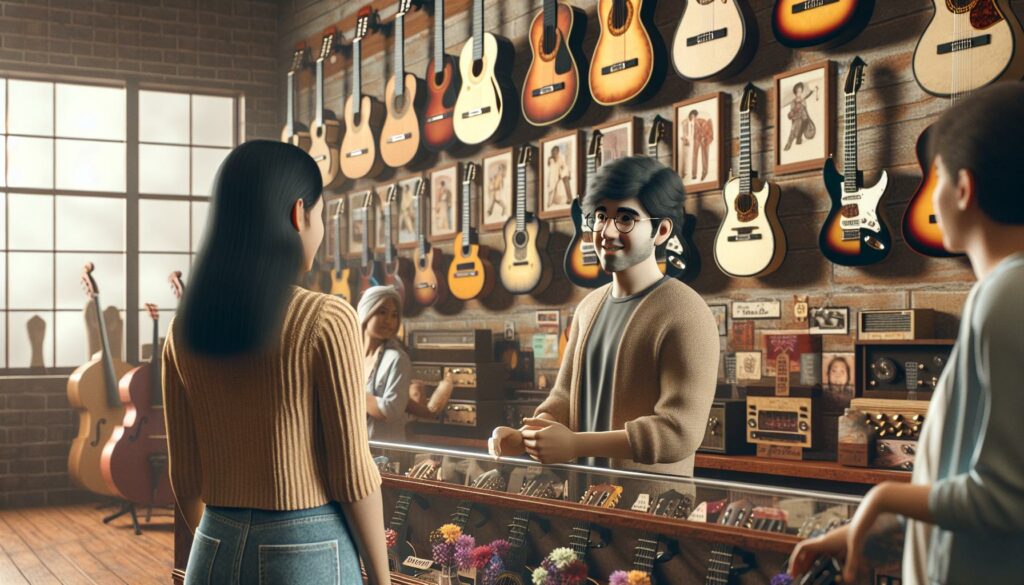As a lifelong musician and avid collector of musical instruments I’ve discovered that world music instruments open up fascinating new dimensions of sound and cultural expression. From the haunting tones of the Australian didgeridoo to the intricate melodies of the Chinese guzheng these remarkable instruments tell stories of human creativity spanning continents and centuries.
I’m continually amazed by how different cultures have developed unique ways to create music using materials from their local environments. Whether it’s the West African djembe carved from a single piece of hardwood or the Indian sitar with its complex system of strings and resonators each instrument represents generations of musical innovation. Through my exploration of world music instruments I’ve learned that they’re not just tools for making sound – they’re gateways to understanding diverse cultures and traditions.
Key Takeaways
- World music instruments represent centuries of cultural evolution, with evidence dating back 43,000 years to bone flutes found in Germany
- Each region has developed unique instruments using local materials – from African djembes carved from hardwood to Asian sitars with complex string systems
- String instruments show remarkable diversity across cultures, with variations like the 78-stringed Middle Eastern qanun and the 21-stringed African kora
- Percussion instruments form the rhythmic foundation of world music, featuring drums like the West African djembe and melodic instruments like the Indonesian gamelan
- Wind instruments demonstrate cultural ingenuity through designs like the Chinese dizi with its buzzing membrane and the telescopic Himalayan radung
- Modern fusion and preservation efforts are helping traditional instruments evolve through electronic adaptations while protecting their cultural heritage
World Music Instruments
World music instruments embody centuries of cultural evolution through their distinctive designs, materials, and playing techniques. I’ve discovered that each instrument tells a unique story of its people’s musical journey.
Ancient Origins and Cultural Significance
Musical instruments emerged from early human civilizations’ need to communicate, celebrate, and connect with spiritual realms. Archaeological findings reveal 43,000-year-old bone flutes from caves in Germany, establishing the deep-rooted presence of musical instruments. The development of these instruments parallels human migration patterns, with communities adapting local materials like bamboo, clay, animal hide, and metals into sophisticated sound-producing tools.
| Era | Notable Discoveries | Location |
|---|---|---|
| 43,000 BCE | Bone Flutes | Germany |
| 3,000 BCE | Lyres | Ur, Mesopotamia |
| 2,000 BCE | Bronze Bells | China |
- Asian Instruments
- Bowed: Erhu (China), Sarangi (India)
- Plucked: Koto (Japan), Sitar (India)
- Percussion: Gamelan (Indonesia), Tabla (India)
- African Instruments
- Drums: Djembe, Talking Drum
- String: Kora, Ngoni
- Wind: Vuvuzela, Algaita
- European Instruments
- Bowed: Hardanger Fiddle (Norway), Nyckelharpa (Sweden)
- Wind: Alphorn (Switzerland), Bagpipes (Scotland)
- Percussion: Txalaparta (Basque), Tamburitza (Balkans)
- Americas Instruments
- Wind: Ocarina (Mesoamerica), Quena (Andes)
- Percussion: Berimbau (Brazil), Steel Pan (Trinidad)
- String: Charango (Peru), Cuatro (Venezuela)
- Oceanic Instruments
- Wind: Didgeridoo (Australia), Pututu (Pacific Islands)
- Percussion: Log Drums (Papua New Guinea), Pate (Polynesia)
- String: Ukeke (Hawaii), Te Kō (New Zealand)
String Instruments Across Cultures
String instruments form a diverse tapestry of musical expression across global cultures, each featuring unique playing techniques, construction methods, and tonal characteristics. I’ve discovered these instruments showcase remarkable cultural adaptations in their design and performance practices.
Asian String Instruments
The Asian continent presents an extensive collection of string instruments, from the Chinese erhu to the Japanese koto. The Chinese guqin, a seven-stringed zither dating back 5,000 years, produces ethereal tones through specific finger techniques. The Korean gayageum features 12 strings stretched across a paulownia wood body, creating distinctive microtonal expressions through string-bending techniques.
| Instrument | Origin | Number of Strings | Notable Features |
|---|---|---|---|
| Erhu | China | 2 | Played with bow, snake skin resonator |
| Koto | Japan | 13 | Movable bridges, played horizontally |
| Guqin | China | 7 | No bridges, silk strings |
| Gayageum | Korea | 12 | Movable bridges, string-bending capability |
Middle Eastern Lutes and Zithers
Middle Eastern string instruments emphasize intricate melodic patterns through unique tuning systems. The oud, featuring 11 strings in six courses, serves as the predecessor to the European lute. The qanun incorporates 78 strings across 26 courses, utilizing small levers to create quarter-tones essential in Arabic music.
| Instrument | Origin | Number of Strings | Notable Features |
|---|---|---|---|
| Oud | Middle East | 11 | No frets, pear-shaped body |
| Qanun | Middle East | 78 | Adjustable levers, played on lap |
| Saz | Turkey | 6-8 | Long neck, movable frets |
| Santoor | Iran/India | 72 | Struck with hammers, trapezoid shape |
African String Instruments
African string instruments demonstrate innovative designs using local materials. The kora combines elements of lute and harp, featuring 21 strings attached to a large gourd resonator. The Ethiopian begena produces distinctive buzzing tones through its unique string arrangement against the bridge.
| Instrument | Origin | Number of Strings | Notable Features |
|---|---|---|---|
| Kora | West Africa | 21 | Gourd resonator, played vertically |
| Begena | Ethiopia | 10 | Buzzing tone, religious significance |
| Ngoni | Mali | 4-7 | Boat-shaped body, animal skin cover |
| Akonting | Senegal | 3 | Banjo predecessor, gourd body |
Global Percussion Instruments
Percussion instruments form the rhythmic backbone of world music traditions, featuring diverse materials, playing techniques and cultural significance across regions.
Drums and Membranophones
Drums encompass instruments with vibrating membranes stretched across hollow chambers. Notable examples include:
- West African djembe crafted from hardwood with goatskin heads
- Indian tabla pairs featuring complex tonal variations through specialized construction
- Middle Eastern darbuka made from ceramic or metal with fish or goat skin membranes
- Japanese taiko drums ranging from portable sizes to massive ceremonial drums
- Brazilian surdo providing the foundational beats in samba rhythms
| Drum Type | Region | Material | Common Uses |
|---|---|---|---|
| Djembe | West Africa | Hardwood, Goatskin | Ceremonies, Dance |
| Tabla | India | Wood/Metal, Goatskin | Classical Music |
| Darbuka | Middle East | Ceramic/Metal | Folk Music |
| Taiko | Japan | Wood | Festivals, Rituals |
| Surdo | Brazil | Metal | Samba, Carnival |
- African balafon with wooden bars producing melodic tones
- Indonesian gamelan metallophones creating complex orchestral textures
- Latin American maracas filled with seeds or beads
- Indian manjira brass cymbals used in devotional music
- Australian aboriginal clapsticks carved from hardwood
- Chinese temple blocks made from hollow wooden blocks
- African shekere gourds covered with beaded nets
| Idiophone Type | Material | Sound Production |
|---|---|---|
| Balafon | Wood | Struck bars |
| Gamelan | Bronze | Struck plates |
| Maracas | Gourd/Wood | Shaken seeds |
| Manjira | Brass | Struck cymbals |
| Temple Blocks | Wood | Struck hollow chambers |
Wind Instruments Around the World
Wind instruments encompass a diverse array of musical tools that produce sound through vibrating columns of air. These instruments demonstrate remarkable ingenuity in design across different cultures, reflecting local materials, traditions, and musical preferences.
Flutes and Whistles
Traditional flutes showcase distinct cultural variations in material, construction, and playing techniques. The Chinese dizi features a unique membrane-covered hole that creates a bright, buzzing tone, while the Indian bansuri produces deep, meditative sounds through its bamboo construction. Notable examples include:
- Japanese shakuhachi: A vertical bamboo flute with 5 holes
- Andean quena: A notched-end flute made from wood or cane
- Native American cedar flute: Features dual air chambers with a distinctive warble
- Irish tin whistle: A metal whistle with 6 finger holes
- Pan flutes: Multiple tubes bound together, found in Romanian and South American traditions
Reed Instruments
Reed instruments utilize vibrating strips of material to generate sound, creating distinctive timbres unique to each culture. The Armenian duduk produces warm, mournful tones through its double-reed design, while the Chinese suona delivers piercing, celebratory sounds. Key examples include:
- Middle Eastern zurna: A double-reed instrument with a conical bore
- Indian shehnai: Features a quadruple reed system
- Turkish ney: Combines end-blown flute with a reed mouthpiece
- Chinese bawu: A free-reed instrument with bamboo construction
- Egyptian mizmar: A double-reed instrument used in folk music
- African ivory trumpet: Carved from elephant tusks
- Himalayan radung: A telescopic brass horn extending 3-4 meters
- Swiss alphorn: A wooden horn spanning 3.5 meters
- Mayan tunkul: A ceramic trumpet with multiple chambers
- Indian sringa: A curved metal horn used in classical music
Modern Adaptations and Fusion
The global music landscape continues to evolve through innovative adaptations of traditional instruments. I’ve observed a significant transformation in how musicians integrate ancestral sounds with modern technology creating unique sonic experiences.
Traditional Instruments in Contemporary Music
Electronic music producers incorporate the Indian sitar in dance tracks through digital sampling techniques. Popular artists like Björk feature the Chinese guzheng in their recordings while Dead Can Dance implements the Armenian duduk in their compositions. I’ve tracked several notable examples of traditional instrument integration:
- Yo-Yo Ma’s Silk Road Ensemble blends the Persian kamancheh with Western classical instruments
- Peter Gabriel’s Real World Studios regularly records African kora with modern synthesizers
- Béla Fleck collaborates with Indian tabla players combining banjo with classical Indian percussion
- Rodrigo y Gabriela incorporate Japanese taiko drums into their flamenco guitar performances
- The electric oud with built-in pickups amplification systems
- Digital tabla machines that replicate traditional rhythms
- The electronic gamelan featuring MIDI capability
- Carbon fiber didgeridoos with modern acoustic properties
- Modified Chinese erhus with Western-style tuning mechanisms
| Innovation Type | Traditional Base | Modern Addition | Year Introduced |
|---|---|---|---|
| Electric Oud | Middle Eastern Oud | Magnetic Pickups | 1965 |
| Digital Tabla | Indian Tabla | Digital Interface | 1998 |
| Carbon Didgeridoo | Australian Didgeridoo | Carbon Fiber Body | 2005 |
| MIDI Gamelan | Indonesian Gamelan | MIDI Technology | 2010 |
| Electric Erhu | Chinese Erhu | Piezo Pickup | 1985 |
Preserving Musical Heritage
Musical instrument preservation safeguards cultural heritage through systematic documentation preservation. Traditional instruments face extinction without dedicated conservation initiatives documentation methods.
Conservation Efforts
Conservation specialists employ specialized techniques to protect historical instruments from environmental damage deterioration. Key preservation methods include:
- Maintaining optimal temperature at 68-72°F (20-22°C) humidity levels between 45-55%
- Using acid-free materials cotton gloves for handling delicate instruments
- Implementing pest management systems to prevent insect damage
- Conducting regular condition assessments documentation of repairs
- Creating custom storage solutions with appropriate padding support
- Establishing handling protocols for researchers performers
- Developing restoration guidelines that preserve original materials craftsmanship
- 3D scanning to capture precise physical dimensions construction details
- High-resolution photography to document decorative elements wear patterns
- Audio recordings that preserve authentic playing techniques sound qualities
- Video documentation of performance practices cultural contexts
- Digital archives containing:
- Construction specifications
- Material composition data
- Historical documentation
- Performance techniques
- Cultural significance records
- Maintenance restoration records
| Documentation Method | Data Captured | Storage Format |
|---|---|---|
| 3D Scanning | Physical dimensions | .STL .OBJ files |
| Photography | Visual details | RAW TIFF formats |
| Audio Recording | Sound qualities | 24-bit WAV files |
| Video Recording | Performance techniques | 4K MP4 files |
| Written Records | Historical context | PDF XML formats |
World music instruments represent an incredible tapestry of human creativity and cultural expression. I’ve witnessed how these remarkable instruments connect people across borders and bridge cultural gaps through their unique sounds and stories.
From ancient bone flutes to modern digital adaptations these musical tools continue to evolve while maintaining their cultural significance. I’m amazed at how each instrument serves as a living testament to human ingenuity and artistic expression.
Through my exploration of world music instruments I’ve discovered that they’re more than just tools for making music – they’re cultural ambassadors that help us understand and appreciate the rich diversity of our global heritage.



